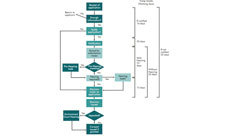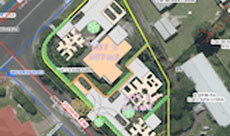Removal of minimum parking rates: National Policy Statement on Urban Development 2020

The National Policy Statement on Urban Development 2020
The National Policy Statement on Urban Development 2020 was gazetted on 23 July 2020. It takes effect on 20 August 2020 when it replaces the National Policy Statement on Urban Development Capacity 2016.
This includes:
- ensuring urban development occurs in a way that takes into account the principles of the Treaty of Waitangi (te Tiriti o Waitangi)
- ensuring that plans make room for growth both ‘up’ and ‘out’, and that rules are not unnecessarily constraining growth
- developing, monitoring and maintaining an evidence base about demand, supply and prices for housing and land to inform planning decisions
- aligning and coordinating planning across urban areas.
The NPS-UD 2020 contains objectives and policies that councils must give effect to in their resource management decisions.
Policy 11: In relation to car parking:
- the district plans of tier 1, 2, and 3 territorial authorities do not set minimum car parking rate requirements, other than for accessible car parks; and
- tier 1, 2, and 3 local authorities are strongly encouraged to manage effects associated with the supply and demand of car parking through comprehensive parking management plans.
3.38 Car parking
If the district plan of a tier 1, 2, or 3 territorial authority contains objectives, policies, rules, or assessment criteria that have the effect of requiring a minimum number of car parks to be provided for a particular development, land use, or activity, the territorial authority must change its district plan to remove that effect, other than in respect of accessible car parks.
Territorial authorities must make any changes required by subclause (1) without using a process in Schedule 1 of the Act.
Nothing in this National Policy Statement prevents a district plan including objectives. policies, rules, or assessment criteria:
requiring a minimum number of accessible car parks to be provided for any activity; or
relating to parking dimensions or manoeuvring standards to apply if:
(i) a developer chooses to supply car parks; or
(ii) when accessible car parks are required.
4.1 Timeframes for implementation
Every tier 1, 2, and 3 local authority must amend its regional policy statement or district plan to give effect to the provisions of this National Policy Statement as soon as practicable
In addition, local authorities must comply with specific policies of this National Policy Statement in accordance with the following table:

The removal of minimum parking rates in district plans (Policy 11) seeks to improve land- use flexibility in urban environments. It will allow more housing and commercial developments, particularly in higher density areas where people do not necessarily need a car to access jobs, services or amenities. Urban space can then be used for higher value purposes than car parking. Developers will still provide car parking in many areas, and must still provide accessible car parking, but the number of car parks will be driven by market demand.
In a dramatic move to reshape New Zealand’s towns and cities, the Government will stop councils from imposing height limits of less than six-storeys and force them to accept developments with no carparks.
The overall intention of the plan is to dramatically increase housing development in urban areas – particularly housing that is very close to public transport.
In all “tier 1” cities – Auckland, Wellington, Tauranga, Christchurch, and Hamilton - councils would not be able to set building height limits of less than six storeys in city centres.
The Policy Statement comes into effect on 20 August but councils have a run in-time to implement any changes. Car parking changes must come into effect by February 2022, while storey-height changes will come into effect no later than August 2022.
accessible car park means a car park designed and marked (for instance, in accordance with the mobility car parking scheme) for use by persons with a disability or with limited mobility


















